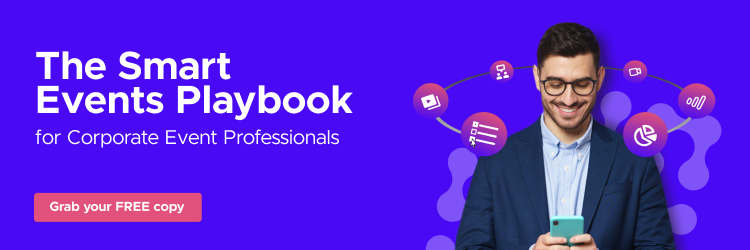Has the Time Finally Come for Event Data to Take Centre Stage?
Blog - 5 mins read
The need to consolidate, de-mystify and improve the use of event data is nothing new. But has the drive become more acute this year? Is increasing competition for audience share forcing organisers to rethink how they gather intelligence from them? “Data is everything” as Rhys Morgan, Head of Digital Marketing from J.P. Morgan put it succinctly at Event Tech Live.
Perhaps it is the threat of an oncoming recession that’s prompting a greater urgency around data capture and analysis. The UK faces the biggest fall in living standards on record and potentially the longest recession since records began. Although a quick audience poll at Event Tech Live revealed the majority of planners were expecting their event budgets to remain static over the next twelve months, many will have to do more with data to continue to prove the ongoing value of their events. Our own survey at the event revealed 77% of event planners thought it was either ‘somewhat’ or ‘very’ likely that they would need to provide more data to justify event budgets over the next two years.
77% of event planners think it is either 'somewhat' or 'very' likely they will need to provide more data to justify event budgets over the next two years
Both 2021 and 2022 have also been years of experimenting with different event formats and channels, the return of the big in-person conference and tradeshow, the continuation of virtual events and the rise of hybrid. Even in-person shows, once data-light, now hold all sorts of possibilities for information capture, from QR codes to polling and interest tagging.
Now is the time for event organisers to reflect on the data to work out what formula works best for their company. With so many options on the table, organisers need to crunch the numbers to work out how their particular audiences engage, and which channel best fits their objectives for each particular event. While some are sticking with hybrid, others told us they have seen fewer benefits and are separating out virtual and in-person channels again to avoid overloading their teams.
Event organisers are facing an uphill battle to get to the value of their data for a number of reasons. Firstly, on a very practical level, the data is fragmented across multiple platforms and software. Anecdotally, delegates we spoke to described the hours spent gathering and cleaning data in multiple CSV. files just so it was all in the same format before they could hand it over to another team for analysis.
Secondly, once you have done your analysis, there’s always the “so what?” question. If we had better access to this data in real-time we could make adjustments to the live event as it was happening. For example, if you could see that a particular exhibition booth (virtual or in-person) wasn’t getting as much traffic as expected, you could recommend adjustments to the booth owner before the event was over. Or if you could see a particular speaker attracted a lot of visits, you could add a ‘meet the speaker’ session onto the event on the event or as a virtual follow-up.
When it comes to understanding the true ROI of events, perhaps we need to also be taking a longer-term view. Yes of course we need to know the engagement and leads generated from the immediate moment in time, but what about one month, two months or three months afterwards?
Events should be reimagined as a series of touchpoints with a lifecycle of their own. Why wait another twelve months until the next engagement? We can bridge the gap and extend the possibility of creating warmer leads with a pre-planned series of webinars, roundtables and other spin-off events, as well as articles and thought leadership discussions within a digital community. This might be run by your team or if you have sponsors, by providing them with the data to go away and do this themselves.
Optimising your events portfolio and audience journey has never been more important. It’s very likely that audiences will become more selective about the events they attend in person over the coming twelve months, with tightening travel budgets, continued home working and the increasing scrutiny over sustainability and ESG credentials.
Organisers need to listen to their delegates and capture data around content interest as much as possible in-between their pillar event, in order to ensure they are booking the best speakers with the most compelling ideas. Data will be an essential part of deciding the best cadence of live and asynchronous, virtual, hybrid and in-person touchpoints throughout next year. It will also help us to refine and personalise the journey on an individual-by-individual basis, using tools like personalised invitations and agendas as well as content targeting.
If there’s one priority you set for next year, make it consolidating your event data – your event teams and your audiences will thank you for it. This is the starting line you need to get to before you can connect your audience journey and create data-driven experiences.
To learn more about how you can make data work for you and not the other way around, download our Smart Events playbook.

